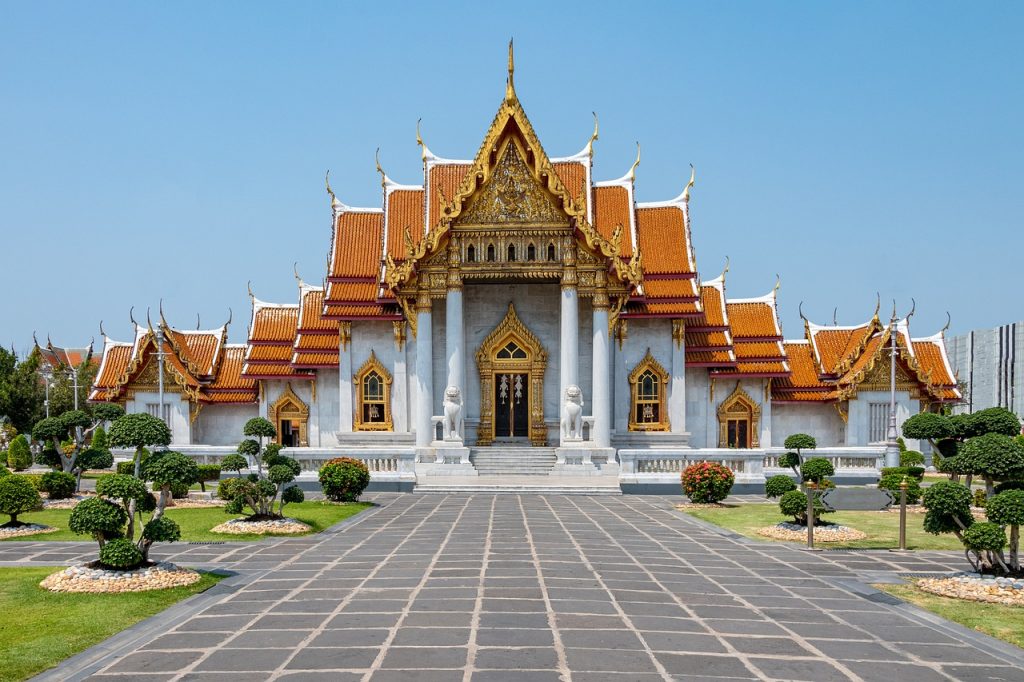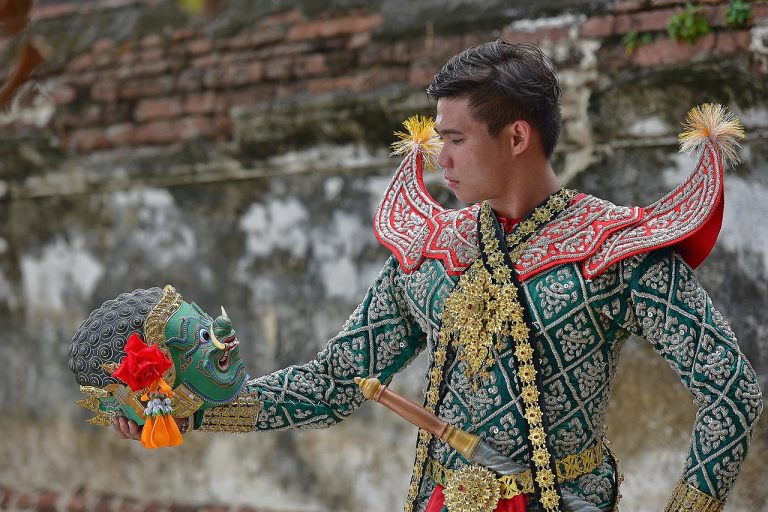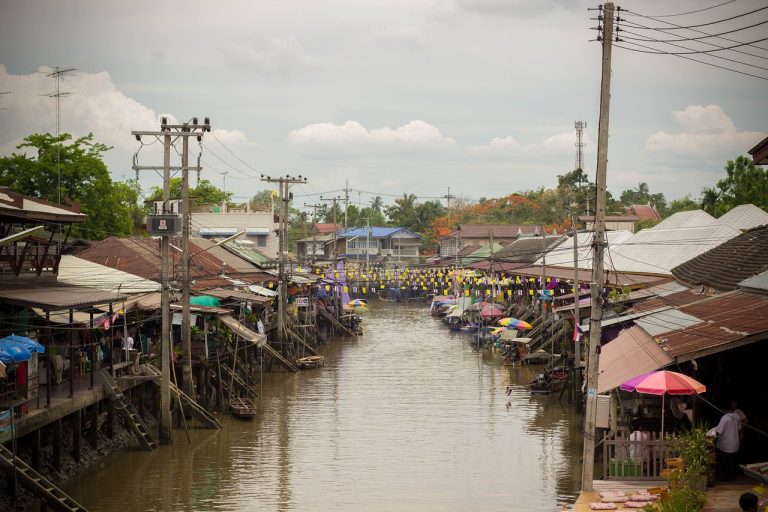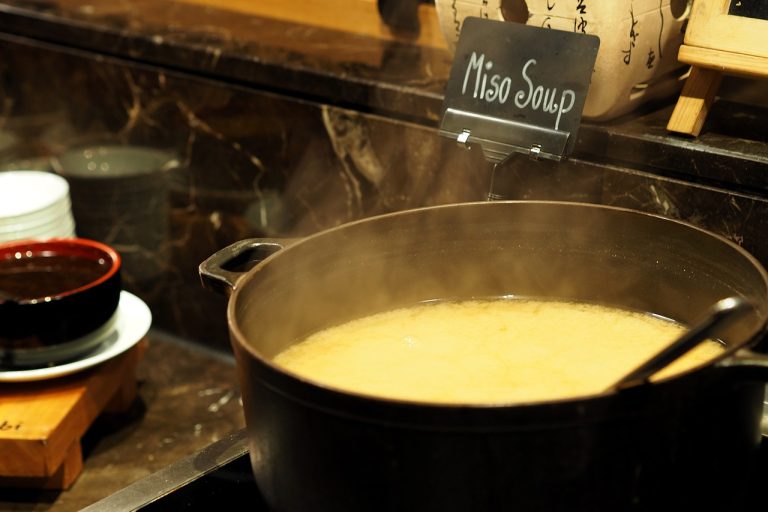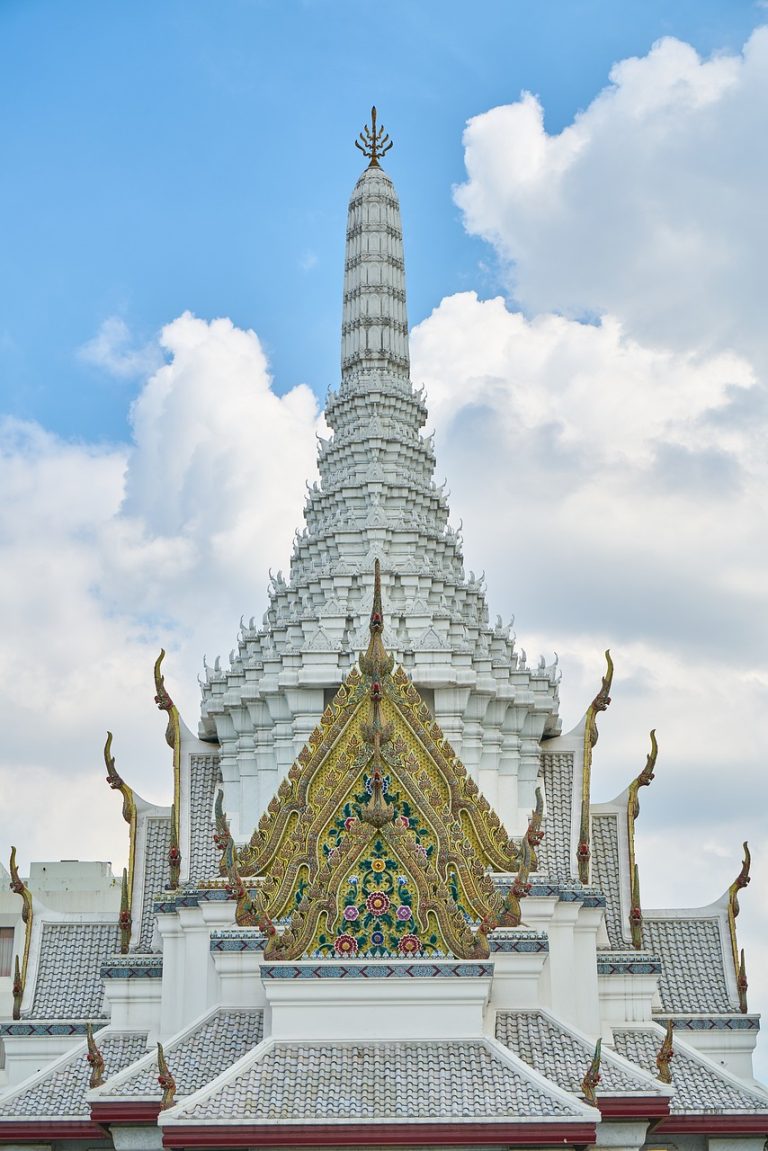Bangkok Thailand Video
Social and Cultural Impact of Bangkok Thailand
Bangkok, the capital city of Thailand, is renowned for its rich social and cultural heritage. The city’s vibrant atmosphere, historical landmarks, and diverse population have contributed to its significant impact on both a local and global scale. This article explores various aspects of Bangkok’s social and cultural influence, highlighting its unique characteristics and attractions.
Bangkok’s Historical Landmarks
- Grand Palace: The Grand Palace, built in 1782, is a magnificent complex that served as the official residence of the Thai monarchs. Its intricate architecture and stunning design reflect the grandeur of the past.
- Wat Arun: Also known as the Temple of Dawn, Wat Arun is a prominent Buddhist temple located on the banks of the Chao Phraya River. Its distinctive spires and intricate porcelain decorations make it a visual masterpiece.
- Wat Pho: Wat Pho, home to the famous Reclining Buddha, is one of Bangkok’s oldest and largest temples. The statue measures 46 meters in length and is covered in gold leaf.
The Grand Palace is a major tourist attraction and a symbol of Thailand’s cultural heritage. Its iconic structures, such as the Wat Phra Kaew (Temple of the Emerald Buddha), showcase the country’s deep-rooted religious traditions.
Visitors can climb to the top of the central prang (tower) for panoramic views of Bangkok’s skyline and the river. Wat Arun is a testament to the city’s spiritual heritage and architectural prowess.
Aside from the Reclining Buddha, Wat Pho is renowned for being Thailand’s first public university and a center for traditional Thai massage. The temple complex is a cultural hub and a place of spiritual significance.
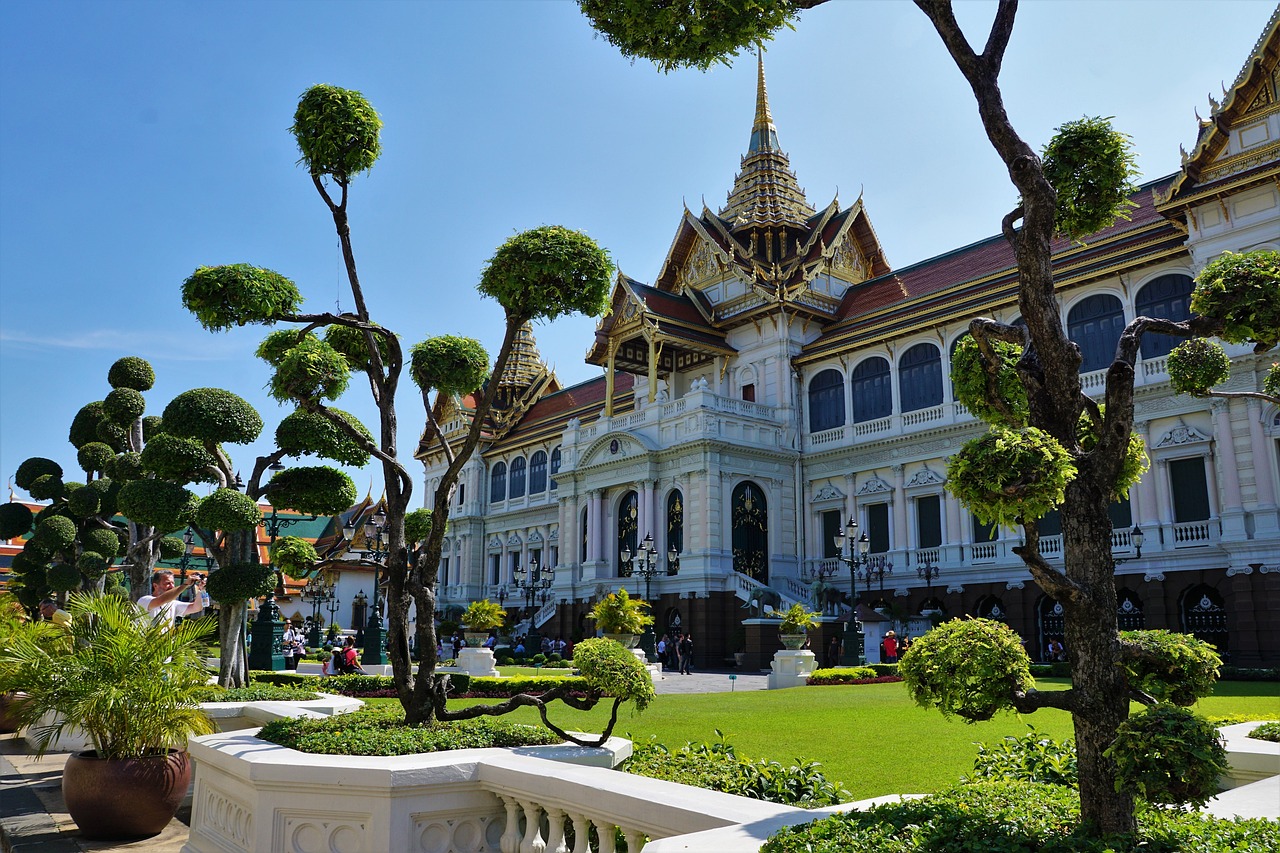
Bangkok’s Culinary Delights
- Street Food: Bangkok is famous for its vibrant street food scene, offering a wide array of delicious dishes. From pad Thai and green curry to mango sticky rice and grilled satay, the city’s street vendors tantalize the taste buds of locals and tourists alike.
- Floating Markets: Bangkok’s floating markets provide a unique cultural experience. These markets, such as Damnoen Saduak and Amphawa, are located on waterways and offer a glimpse into traditional Thai life.
- Royal Thai Cuisine: Bangkok is home to numerous upscale restaurants that specialize in Royal Thai Cuisine, which was once exclusively reserved for the royal court. These establishments offer a refined dining experience, showcasing the intricate flavors and presentation of traditional Thai dishes.
Exploring the bustling street markets and night bazaars, such as Chinatown’s Yaowarat Road and the popular Chatuchak Weekend Market, is a culinary adventure not to be missed.
Visitors can navigate through the canals and purchase fresh produce, local handicrafts, and delectable street food from vendors on boats. The floating markets are a testament to Bangkok’s historical trading roots.
From the delicate flavors of Tom Kha Gai (coconut chicken soup) to the complex spiciness of Gaeng Ped Yang (red curry with roasted duck), Royal Thai Cuisine reflects the city’s culinary sophistication.
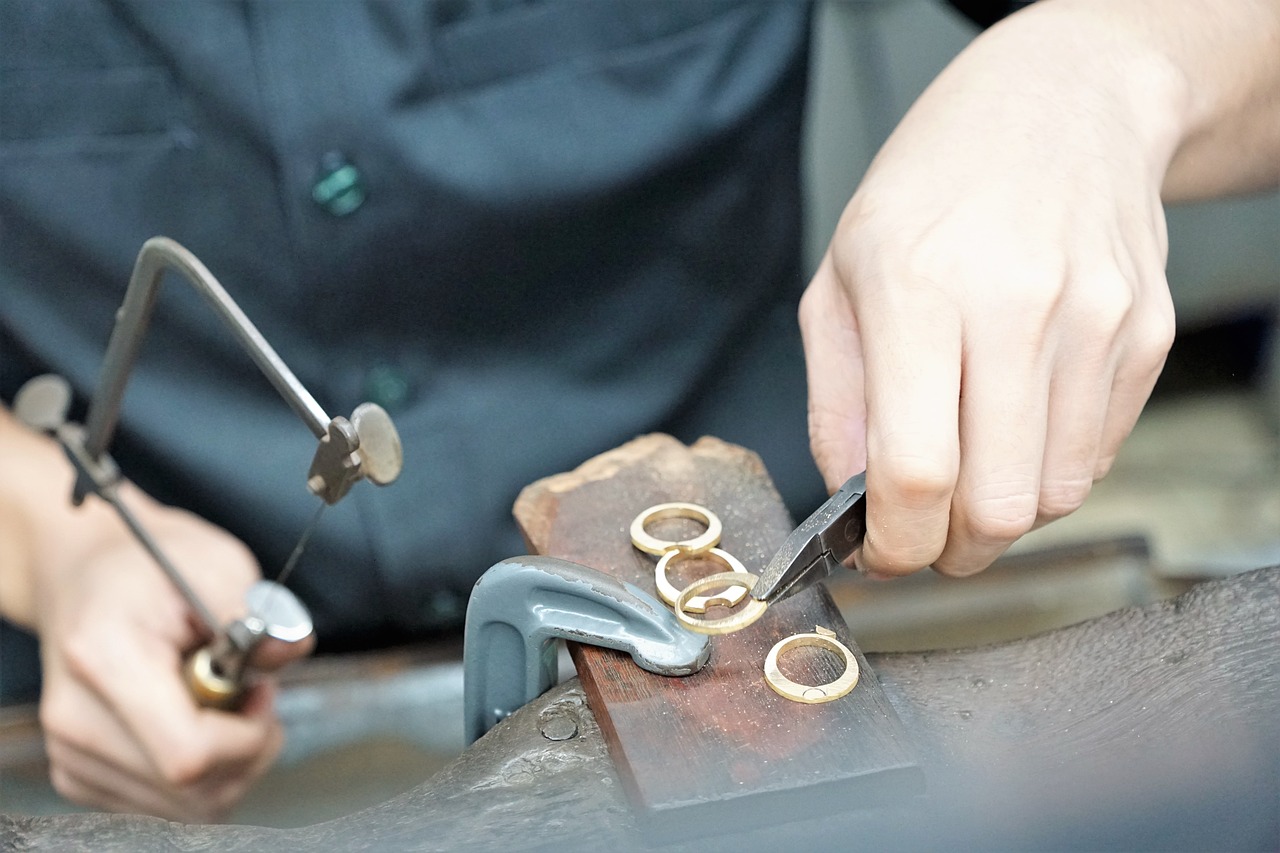
Bangkok’s Festivals and Celebrations
- Songkran: Songkran, the Thai New Year festival, is one of the most vibrant and celebrated events in Bangkok. Lasting for three days in mid-April, the festival involves water fights, traditional parades, and religious ceremonies.
- Loi Krathong: Loi Krathong, also known as the Festival of Lights, takes place on the full moon night of the 12th lunar month. Participants release beautifully decorated floating baskets, known as krathongs, into the rivers and canals.
- Chinese New Year: Bangkok’s Chinatown comes alive during the Chinese New Year celebrations. The streets are adorned with vibrant decorations, and dragon and lion dances fill the air.
Locals and tourists come together to splash water on each other as a symbol of cleansing and renewal. Songkran showcases Bangkok’s festive spirit and cultural traditions.
The festival signifies the release of negative energy and the expression of gratitude to the water goddess. The sight of floating candles and twinkling lights illuminating the waterways is a mesmerizing spectacle.
The festivities include fireworks, cultural performances, and traditional Chinese delicacies. Chinese New Year showcases Bangkok’s multiculturalism and the harmonious coexistence of different communities.

Bangkok’s Art and Entertainment Scene
- Art Galleries: Bangkok boasts a thriving art scene, with numerous galleries showcasing both traditional and contemporary works. The Bangkok Art and Culture Centre (BACC) is a hub for exhibitions, performances, and workshops.
- Nightlife: Bangkok’s nightlife is legendary, with a wide range of entertainment options to suit every taste. From rooftop bars with panoramic views to energetic nightclubs and live music venues, the city comes alive after dark.
- Thai Traditional Performances: Cultural shows, such as traditional Thai dance performances and Muay Thai (Thai boxing) matches, provide an insight into the country’s rich heritage.
Art lovers can explore the diverse range of artworks, including paintings, sculptures, installations, and multimedia pieces. The art scene in Bangkok nurtures creativity and fosters cultural exchange.
Visitors can enjoy live performances, DJ sets, and cultural shows that highlight the city’s dynamic entertainment scene. Bangkok’s nightlife is a reflection of its modern and cosmopolitan character.
These performances captivate audiences with their graceful movements, colorful costumes, and displays of martial arts prowess. Thai traditional performances are a window into Bangkok’s cultural legacy.
Bangkok’s Green Spaces
- Lumpini Park: Lumpini Park is an oasis in the heart of Bangkok, offering a serene escape from the bustling city. The park features lush greenery, tranquil lakes, and recreational facilities.
- Benjasiri Park: Located in the Sukhumvit area, Benjasiri Park is known for its beautiful sculptures and art installations. The park offers walking paths, a large lake, and a playground.
- Bang Krachao: Known as the “Green Lung of Bangkok,” Bang Krachao is an expansive green area situated on an island in the Chao Phraya River. It is a haven for nature lovers.
Visitors can enjoy activities such as jogging, cycling, and paddle boating, as well as participate in group exercises and Tai Chi sessions. Lumpini Park provides a space for relaxation and outdoor recreation.
Visitors can admire the artworks, join fitness classes, or simply relax in the peaceful surroundings. Benjasiri Park is a popular spot for locals and tourists seeking tranquility amidst the urban landscape.
Exploring Bang Krachao’s lush mangroves, cycling along its elevated paths, and visiting its floating markets provide a unique eco-tourism experience. The island showcases Bangkok’s commitment to preserving its natural heritage.
Conclusion
Bangkok Thailand’s social and cultural impact is undeniable. From its historical landmarks and culinary delights to its vibrant festivals, art scene, and green spaces, the city offers a diverse range of experiences that captivate locals and visitors alike. Bangkok’s unique blend of tradition and modernity, alongside its welcoming atmosphere, make it a truly remarkable destination.
References
- Petit Palace: cityloco.net
- Bangkok Art and Culture Centre: bacc.or.th

